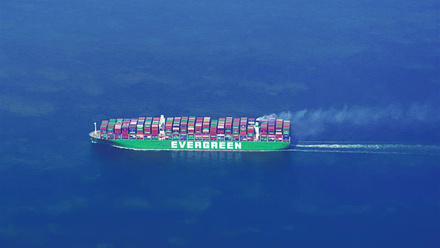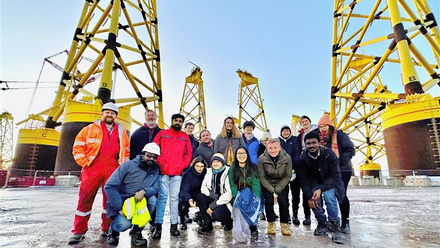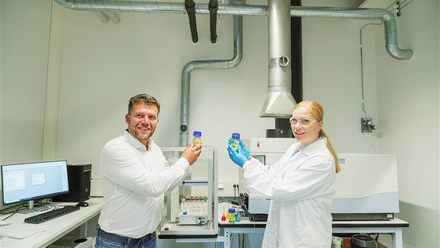The Royal Navy: end of an era for gas turbines?
John Barnes looks at UK frigate and destroyer designs 1949-2020 and why they moved away from gas, to diesel.
Gas turbines have been propelling the warships of the UK’s Royal Navy for over 50 years. Lightweight, fast, and able to ramp from 0-100% throttle near-instantaneously, they were regarded as the ideal choice.
Yet Britain’s latest Type 31 frigates have switched to diesel – why?
The marine gas turbine story in the Royal Navy (RN) begins just after the end of World War Two. At a time when aircraft had just started to use jet engine technology to great effect, RN designers identified its potential in ships, as well.
In 1947, RN vessel MGB 2009, a diesel-powered fast patrol boat, was retrofitted with a Metropolitan-Vickers (Metrovick) G.1 Gatric gas turbine on the centre shaft. The two outer shafts remained powered by diesels.
Then in 1953, the Royal Navy converted a former steam gunboat, HMS Grey Goose, to 100% gas turbine power – making it not only the first warship, but the first ship of any kind, to be totally gas turbine powered. But it was ahead of its time; the engine was unwieldy, complicated, and very large.
After 1956, the RN’s Type 81 frigates used a combination of steam turbines for propulsion and gas turbines to boost power. By 1958, the technology had developed further. RN ordered two Brave class fast-attack craft, Brave Borderer and Brave Swordsman.
Built by Vospers, they were the fastest warships in the world, capable of 52 kt, with a cruising speed of 40. Each was powered by three Bristol Proteus gas turbines, delivering 3,500 horsepower each; auxiliary power was provided by two small Rover gas turbines.
The next milestone came with the Rolls-Royce Marine Olympus turbine, with a rating of 17.3MW – enough output to power a major warship by itself. Later variants of the turbines would reach 21MW.
In 1968, the Type 14 frigate HMS Exmouth was fitted with a prototype propulsion package, comprising a single Olympus for full performance, and two Proteus turbines for cruising.
Series adoption
HMS Exmouth became the first major warship to be powered exclusively by gas turbines. In the years following, the RN carried out extended trials to validate the feasibility of all-gas turbine propulsion. These were successful, and from then on, the rest of the UK’s frigates and destroyers would follow (see the full list below). Olympus was installed on Type 42 destroyers, Type 21 frigates, and two batches of Type 22 frigates – the third group exchanging the twin Olympus for twin Spey gas turbines.
All three classes used twin Rolls Royce Tyne gas turbines for cruising and Olympus gas turbines for sprinting, arranged in a GOGOG format.
This provided excellent throttle response and performance; but it had its downsides. With a low machinery weight, more tonnage was available for other equipment; but as this was likely to be electronics mounted high up, it yielded stability concerns.
The gas turbines were easily maintained and replacing parts was straightforward; but it consumed substantial quantities of air, requiring large intakes and exhaust from the machinery space – and a large amount of expensive fuel.
In the mid-1970s, Britain’s three Invincible aircraft carriers were each equipped with four Olympus turbines.
All-electric Type 23 class
Then, a new generation of vessels – the Type 23 class of frigates – introduced a radical new electrical/mechanical propulsion system. Two Spey gas turbines, driving through a reduction gearbox, would provide for higher speeds; but at slower speeds, a low power DC propulsion motor, supplied via the ship’s diesel generators, would allow for quiet propulsion.
This approach was taken further with the adoption of a so-called integrated electric propulsion system onboard the Type 45 destroyers, comprising two Rolls-Royce WR-21 gas turbines driving alternators, together with two diesel generators providing electrical power at 4,160 volts to a high voltage system. The high voltage supply was then used to provide power to two GE Power Conversion advanced induction motors with outputs of 20 MW each.
What’s happening today?
Today, HMS Queen Elizabeth and HMS Prince of Wales each use two Rolls-Royce MT30 gas turbines, powering an electric drivetrain. Currently under construction, the eight Type 26 frigates, revert to this system too, but with a single R-R MT30 (Trent) gas turbine.
The adoption of diesel propulsion for the Type 31 marks a return to the technology of the mid-century, although engine and turbocharging technology has improved massively.
For the last 50 years, fitting ships with aircraft technology granted them blistering speed; but it seems even the Royal Navy could not keep up with the high cost of their high-grade fuel.
UK frigate and destroyer designs 1949-2020
| Class | No built | Designed | Into service | Machinery |
|---|---|---|---|---|
| Type 15* | 23 | 1949*** | 1951 | ST |
| Type 16* | 10 | 1950*** | 1952 | ST |
| Type 12 | 42*** | 1950 | 1956 | ST |
| Type 14 | 12 | 1951 | 1957 | ST |
| Type 41 | 4 | 1950 | 1957 | D |
| Type 61 | 4 | 1950 | 1957 | D |
| Type 81 | 7 | 1956 | 1961 | ST/ GT |
| County | 8 | 1955 | 1962 | ST/ GT |
| Type 82 | 1 | 1965 | 1973 | ST/ GT |
| Type 21 | 8 | 1969 | 1974 | GT |
| Type 42 | 14 | 1968 | 1975 | GT |
| Type 22 | 14 | 1972 | 1979 | GT |
| Type 23 | 16 | 1981 | 1990 | GT/ electric |
| Type 45 | 6 | 2000 | 2009 | GT/ electric |
| Type 26 | 8 | 2015 | 2027 (planned) | GT/ electric |
| Type 31 | 5 | 2019 | 2027 (planned) | D |
* Converted from wartime destroyers
** Whitby, Rothesay and Leander classes
*** Conversion design date
John Barnes is a graduate naval architect who has been writing about marine technology since 1971. He was the former editor of Marine Engineers Review (MER) and is a Fellow of IMarEST and a Member of RINA.






